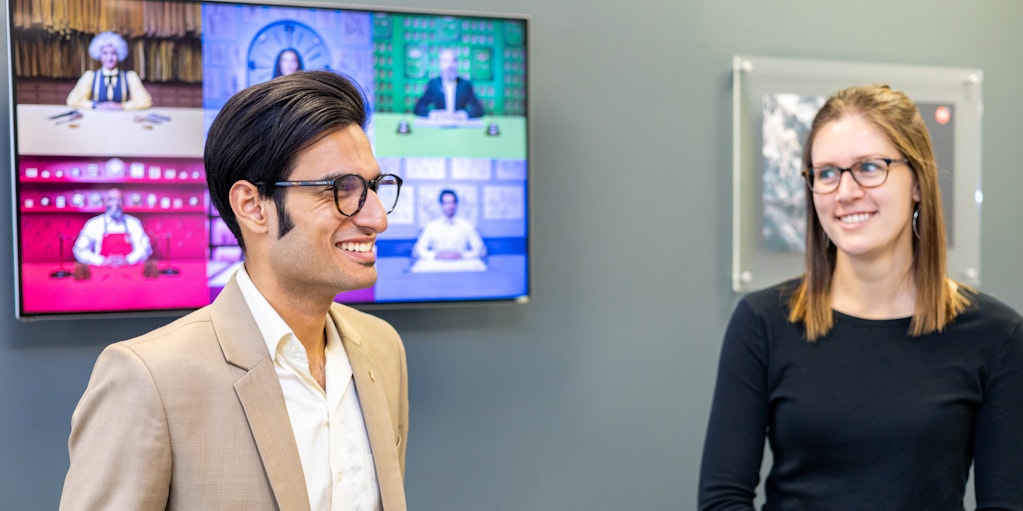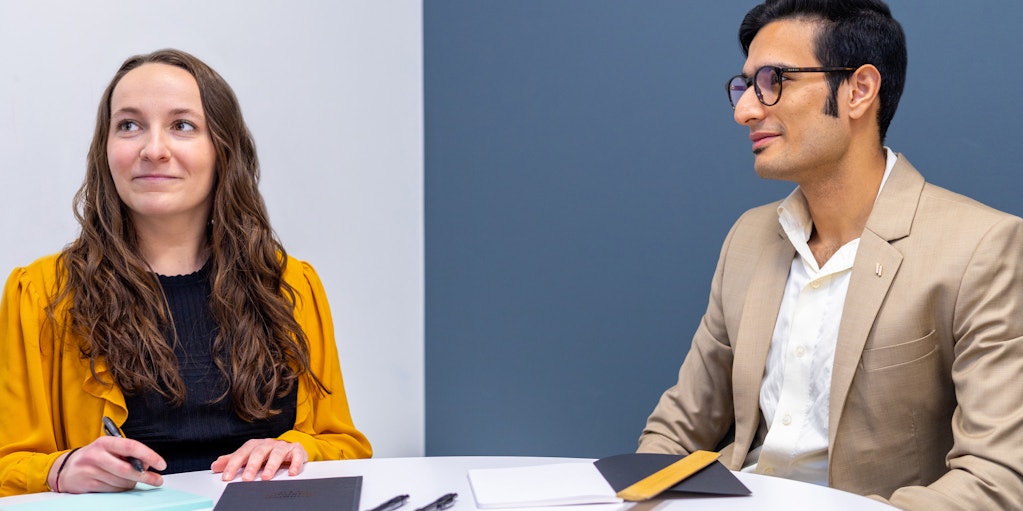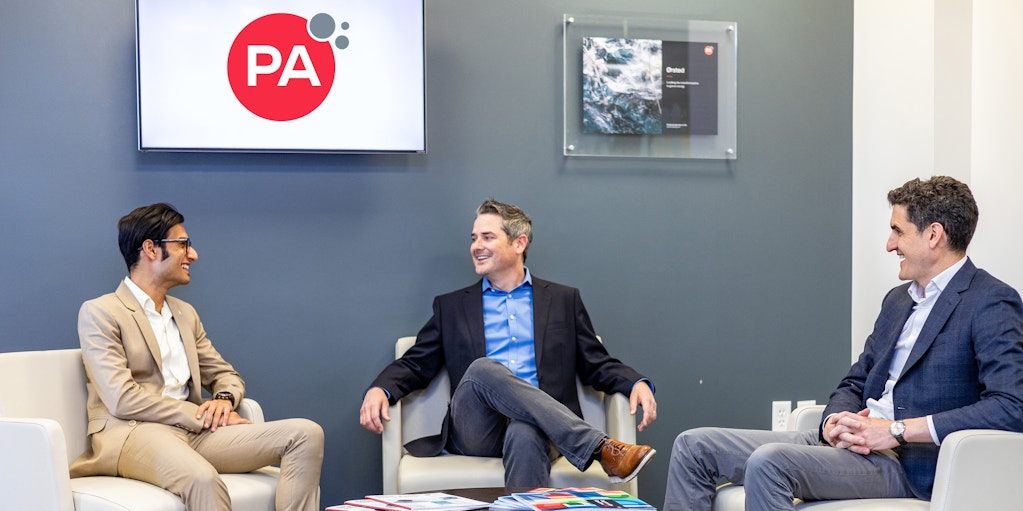
15 minutes with: Akshat Kasliwal
Tags
Our experts are at the forefront of bringing ingenuity to life for our clients. They accelerate new growth ideas from concept, through design and development to commercial success. And they revitalise organisations with the leadership, culture, systems and processes to make innovation a reality.
In this series, you’ll meet some of the brilliant minds creating change every day.

What is your background and how did you come to PA?
I joined PA in June 2019 as an analyst in our US energy team and now head up PA’s renewable asset analytics team. Previously, I was at the University of Michigan, pursuing my master’s degree in Sustainable Systems. All my life, I’ve focused on matters related to energy and sustainability. My primary emphasis in grad school was on sustainable transportation, and prior to that on the more technical and engineering facets of energy systems. Specifically, as a chemical engineer out of college, I worked in Oman on oil and gas, in South Korea on battery storage materials, and in India on waste-to-fuels.
One area of particular interest to me was emerging systems – at Michigan, I worked closely with Ford Motor Company on the energetics of flying and self-driving cars. It gave me the opportunity to learn about guiding the sustainable deployment of new technologies. Upon graduation, I wanted to use the experiences I’d gathered to advise stakeholders on making informed strategic and investment decisions as they navigate the transition to a low-carbon economy. At the time, I gathered that PA could offer me a great platform to do that, and five years on, I can say that has indeed been the case.
What’s in PA’s DNA that makes us different?
A lot of other consulting firms tend to get involved in a cursory fashion. However, PA is different because we leverage our subject matter expertise and hands-on experience to serve as a trusted advisor and partner to our clients. They often come to us with a vision to assess a strategic or financial pathway, and further, ask us about how to best execute on it for achieving success. We pair rigorous analysis with decades of experience to work out whether it’s the right way for them to go, or if they should rethink their approach and consider alternative options altogether.
We lay out the case, bring them along the journey, and illustrate what that may look like in practice. Often, that means having challenging conversations with clients and saying “look, there’s a different way to approach this” or “there’s a pitfall you haven’t considered”, or “here’s another opportunity that fits nicely with the existing offering.” Clients value these perspectives because they see that our intent and actions align squarely with their best interests.

If you were talking to somebody who didn’t know anything about consulting, how would you describe what you do?
Broadly speaking, our team helps industry stakeholders navigate the risks and opportunities of the energy transition. In practice, this means two things. The first entails advising them on transactions, such as mergers and acquisitions (M&A). For instance, a private equity fund that needs to deploy $2 billion worth of capital from their environmental, social, and governance (ESG) fund might come to us asking about the long-term value of investing in a portfolio of wind and solar assets in Texas. We project the earnings of said portfolio, and highlight various risks and opportunities, helping the client make a go or no-go decision based on that information.
Our forecasts have a higher degree of certainty because they are grounded in rigorous analysis and thoughtful storytelling, that has been tested over the past 25 years.”
Finally on that front, we leverage our industry-leading tools and processes that set us apart from other consultancies. Second, we advise on a lot of strategy work. In practice, this means myriad things, including helping clients enter new markets, advising them on launching novel commercial offerings, navigating litigation around energy assets, providing them with expert witness testimony, and helping them create systems and protocols to maximize the value and minimize the risks of their infrastructure investments.
How has your work has changed in recent years, maybe through the tools you use, or the environment you operate in?
In the past five years alone – since I’ve been at PA – there’s been a sea change in the type of work we do. When I started at PA as an analyst, around three-quarters of my time was focused on thermal transaction work, entailing asset valuation for conventional power generation, such as natural gas, nuclear, and biomass. Now, about 10 percent of my time is focused on that type of work. The rest is focused on a combination of commercial strategy and M&A for renewable energy, batteries, transmission, and carbon capture.
I lead our renewable asset analytics team here out of Denver. One of our differentiators is having pioneered an approach for more accurately valuing renewable assets.
Through what we call our “Weather Year” process, we look at discrete historical weather patterns across individual assets nationwide, and how wind and solar output based on that weather would correlate to price formation in the market, on a go-forward basis.”
In high renewable penetration markets, this helps us capture the tail events, either negative or positive, that drive value creation or destruction for standalone wind and solar facilities. That’s a process our team developed and has really championed across the industry over the past several years. It’s become standard practice for us, and we’ve seen others in the industry adopt similar methodologies. We’ve used it in both private transactions and for public-facing settings as part of expert witness testimony and litigation work, and it has resonated with a lot of our clients and broader stakeholders.

The other noteworthy change is the shift from primarily doing transaction-oriented work to broader ‘strategic’ advisory. When I started at PA, about 80 percent of my work was transaction focused. Now it’s closer to half, with the other part being strategic support. One example is our work with an owner and operator of a portfolio of gas-fired assets. They needed a commercial strategy to retire their gas-fired assets in light of looming environmental policy risks, and redevelop those sites for future revenue generation.
We came up with a plan to optimally retire their thermal fleet and install wind, solar, and storage at each site based on land and capital constraints, market demand for 24/7 carbon-free energy, evolving rules, and so on. We identified target customers to whom they could sell the contemplated commercial product, and developed a business case for doing so, highlighting risks and opportunities therein. We conducted the financial modelling associated with that transformation, and also helped them apply to the Department of Energy’s Loan Programs Office, which offers lower cost debt to applicants that work on projects to lower greenhouse gas emissions.
What inspired you to work in energy and sustainability?
I’ve always been focused on matters related to energy and sustainability. As part of – and after – my bachelor’s degree in chemical engineering, I worked on various energy technologies such as oil and gas, biodiesel, battery storage, and waste-to-fuels. However, it was very much focused on the technical aspects of the energy system.
What I wanted to do was broaden my horizons and learn more about the economic, financial, commercial, policy, and regulatory aspects of the industry to complement my existing technical background. That’s partly why I went into grad school and joined a program that was quite multi-disciplinary, and have been with PA since.
My broader vision is for my work to directly result in positive, measurable, and material impacts to the ‘triple bottom line’, which benefits the planet, people, and profits. Everything I do is guided by that proverbial north star.

How does ingenuity come through in the various projects that you work on?
Our clients tell us that a lot of consulting firms have historically relied on jargon and restrictive frameworks for approaching their questions. PA, however, goes in with an open mind, while leaning on past experiences.
What really sets us apart is our subject matter expertise. Our team is not just a group of generalist consultants. We continually bring people along the journey of being subject matter experts, and the learning never stops. Seasoned folk on our team are always learning something new and getting in the trenches. We come up with novel ideas and ways of thinking by staying on our toes and keeping up to date.
An example is our work with a developer that wants to build an efficient gas-fired plant fitted with carbon capture along the Gulf Coast. This type of project hasn’t been done at scale before, so there’s no existing template for success. The question our clients asked was if they were to build such a project in the region, would there be the appetite for a counterparty to sign a long-term offtake contract for its output? We tapped into our personal networks, and had confidential conversations with stakeholders we knew in the market to gauge their impressions about the archetype of such a project.
In ongoing ideation sessions with the clients, we honed-in on both the target entities, and potential price premiums they could achieve for offering a baseload, low-carbon product. Ultimately, relying on our work products, the clients could tell a far more compelling commercial story when they pitched to their respective investment committees.
It’s a great example of ingenuity – it’s not just a cookie cutter approach. We didn’t just hit F9 on pre-existing models. We examined different angles, paired the quantitative and qualitative, got a pulse on the market, and came up with a compelling narrative and ultimately commercial strategy. It’s probably not something that a lot of others could have done.”
What’s exciting you most at the moment in your line of work?
One thing I’ve personally been invested in is the Inflation Reduction Act. It’s the single largest piece of climate legislation ever, where the US government set aside roughly $370 billion for climate-focused initiatives. It’s brought a lot of exuberance to the energy industry here but also globally, given the knock-on effects it has induced.
Part of what I do is lead up PA’s efforts and initiatives related to the Inflation Reduction Act, through which I’ve seen firsthand how a lot of new projects and developments have been enabled by things like tax credits and transferability and other provisions within the Act. There’s been a bit of a nuclear renaissance in the US, owing in no small part due to the Inflation Reduction Act. We’re starting to hear more about new nuclear developments and extensions of operating lives for existing facilities. All that has been facilitated by the Act.

What advice would you give to someone who wanted to do the work that you do?
First and foremost, it’s about being curious, engaged, and driven to make a positive change in society. I think folks who are the happiest and the most ‘successful’ are the ones that have found meaning in the work they do here. I’d urge those people to take a step back and really think about how what they do on a day-to-day basis has a broader positive impact on society – then it won’t feel like work. Nothing here feels like a chore to me. Every day I think, OK, how am I going to make a difference today? It never seems boring.
What are your key goals for the future?
I want to look back at my career and point to very concrete instances where my work directly unlocked value, either for industry stakeholders or society more broadly. My vision is for entities to feel empowered in the clean energy journey. Everyone has a part to play and it’s at least partially incumbent on me to bring them along the journey.
By way of example, thanks to the Inflation Reduction Act, now all companies can offset their tax liability by investing in renewable energy projects. However, there’s a lot of hesitation because they have never done that. It is a unique opportunity, because it can lower their tax burdens while furthering the clean energy transition. That’s one example of how all entities can feel empowered to make a difference. I want to bring them along the journey. If we can do that, we will have succeeded.
What are you looking forward to right now?
At work, the thing I’m looking forward to most is seeing some of the some of the strategy projects we’ve been working hard on over the past six to 12 months come to fruition. They’ve been very much in the assessment and planning phases, but now we’re at a point where we hopefully start to see real impacts from those being executed. I also have some exciting business travel lined-up to visit some of our clients and experience firsthand the impacts of our work in action.
Outside of work, I’m a big American football fan. I’m looking forward to being back in Ann Arbor, at the stadium called the Big House, to see the Michigan Wolverines. It’s the largest stadium in the world, with a capacity of roughly 110,000 people. I’ve also got a bunch of concerts lined-up across the country that I’m looking forward to attending.
Explore more









